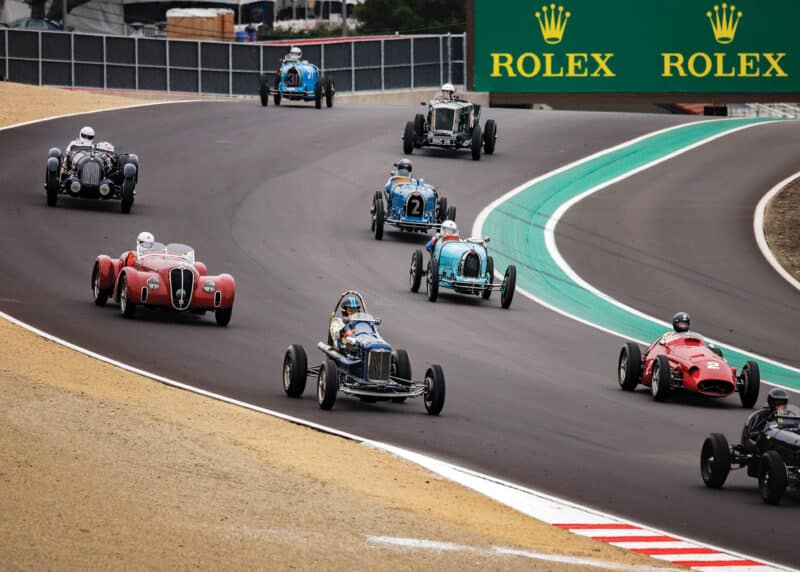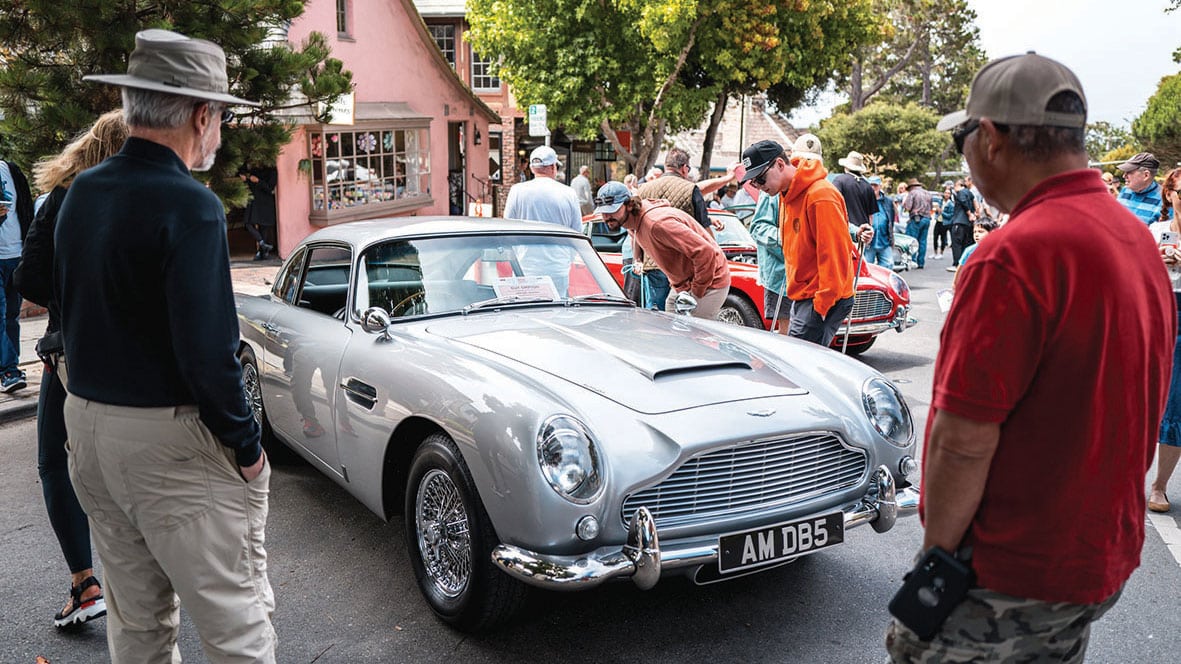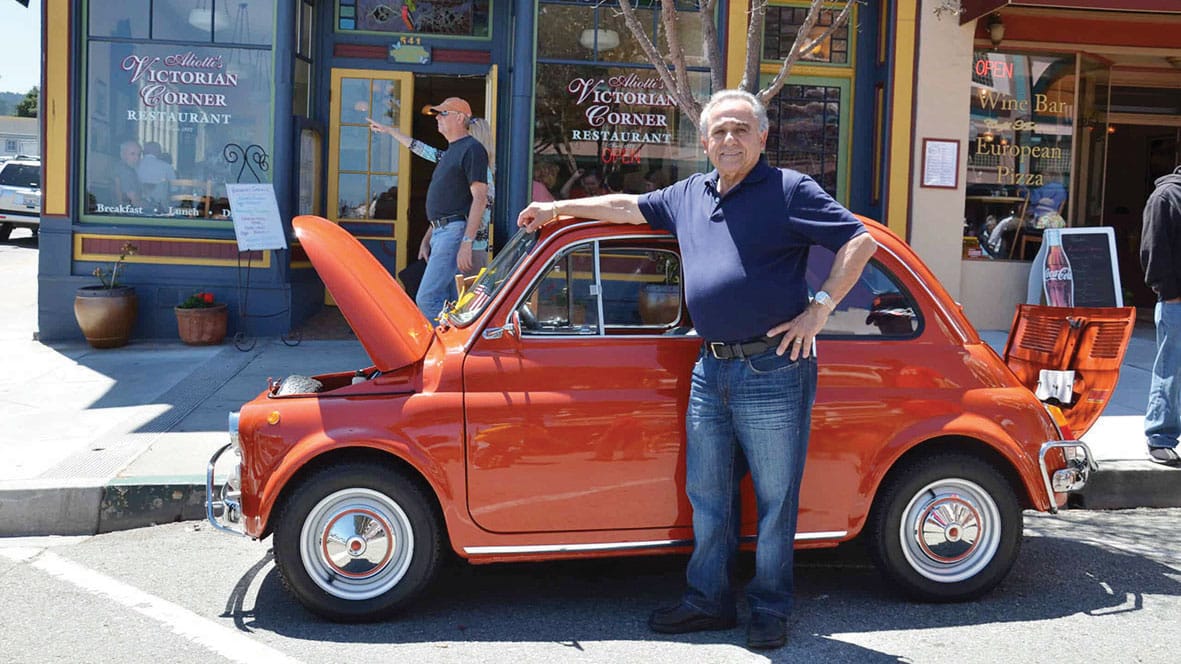Monterey car week: The rub of the green
Monterey Car Week. That’s something of a misnomer – because this world-renowned homage to car culture has grown into a 10-day extravaganza that this year runs from August 8–17. In fact, it’s even longer because, four days before the official start, scores of classics will meet in Kirkland, near Seattle, to take part in the 1500-mile Pebble Beach Motoring Classic which ends on the Monterey Peninsula nine days later – in good time for the Pebble Beach Concours d’Elegance.
The concours (Sunday, August 17) remains the main event of Monterey Car Week despite being just one of dozens of peripheral happenings that have evolved from it – in just the same way that the concours itself was founded in 1950 as an add-on to the Pebble Beach Road Races which ran from 1950-56. The one-day festival of gleaming paintwork and burnished chrome has taken place every year – save for 1960 due to a scheduling conflict with another Pebble Beach event and pandemic-stricken 2020 – and remains the jewel in the crown of this automotive feast. Two hundred of the world’s finest and most valuable veteran, vintage and classic cars line up on the Pebble Beach golf links to be ogled and admired by more than 15,000 spectators.
But while the crowds are there simply to coo in admiration at vehicles worth hundreds of millions of dollars, this is a full day’s work for the leading experts tasked with examining each entry with forensic care before choosing the winners in a range of categories – and finally selecting the best in show.
Concours day is still regarded as the climax of Monterey Car Week, yet the ever-growing number of satellite events taking place during the build-up have taken on their own significance – not least Motorlux, produced by classic car insurance giant Hagerty, that marks the unofficial start of the proceedings.
Taking place at the Monterey Jet Center on Wednesday, August 13 and dubbed ‘the biggest party on the peninsula’, it’s the place to see and be seen, with catering by Michelin-starred chefs and top Californian wines being served by the bucket-full. More than 100 rare cars and aircraft will be dotted around for the 3000 guests to admire as they dance the night away to tunes provided by a leading DJ – all in exchange for a ticket price of £490 per head.
Two days later (Friday, August 15) the gates open for the 22nd edition of The Quail, A Motorsports Gathering that takes place at the Quail Lodge & Golf Club in the shadow of the Santa Lucia mountains.
For those looking for less-formal events to call at and possibly spend some money, Pebble Beach RetroAuto is a must. Starting on Thursday, August 14 and situated opposite the driving range on the Pebble Beach golf course, it combines an eclectic array of luxury goods and the latest high-tech car gadgets with automobilia, ephemera, art and other motoring collectibles (including plenty of Pebble Beach merch). A free-to-enter event, it’s open daily until 6pm, including on concours day.

Typical 1927-55 single-seater dicing at Laguna Seca
And while the world of old motors is undeniably male-dominated, Monterey doesn’t overlook the enthusiasm for the subject among the female car fans – notably through the staging of a women-only car show at Carmel-by-the-Sea. The Prancing Ponies Car Show is organised by the San Francisco-based Prancing Ponies Foundation, a non-profit group dedicated to teaching leadership skills to young, low-income women. Expect to see more than 100 exotic, classic, muscle, sport and electric cars, with exhibitors and reserved guests being able to take advantage of a VIP lounge, all day food and wine and a fashion show featuring local designers and models.
Female owners are encouraged to dress up to match either the colour of their car or the era in which it was built – and, just to demonstrate inclusivity, a few male-owned motors will be allowed in an invitation-only Men we Love category. VIP passes start at £225; regular spectators go for free.
But for those more interested in seeing and hearing the cars they love in action, a trip to the Laguna Seca Raceway may be in order on Saturday, August 9 and Sunday 10 to take in the two-day Monterey Pre-Reunion, a precursor to the four-day Rolex-sponsored Monterey Motorsport Reunion (as many as 550 cars – with some past F1 racers) which starts on Wednesday.
The ‘pre’ event, kicking-off at 7am each day, will see around 200-300 historic racing cars practicing and qualifying for ‘the real thing’ and includes the recently added feature known as the Corkscrew Hillclimb in which drivers tackle the celebrated hairpin Turn 8 and 8A in the opposite direction to normal.
Monterey Car Week
Six other events not to miss
August 8, 11-13
Cars, cocktails and calamari
Taking place between 9am and 10am on Old Fisherman’s Wharf in Old Monterey, this display of especially decorated cars is designed to provide photo-opp fodder and includes a photography and essay contest with prizes of ‘Wharf dollars’ to spend on car-themed cocktails and other items.

August 10-13
Poster Pop-up
Head to Crossroads Boulevard, Carmel between 1.30pm and 6pm to see (and also buy) an impressively large display of guaranteed original posters publicising car marques and motoring events from the years 1895-1970.

August 11
Central Coast Poker Rally
An unusual charity rally for select classic and exotic cars, this will start at 8.30am at The Dunes in Marina with a public car show before drivers head-off on a route featuring five ‘pitstops’ to collect poker hands – and play blackjack and roulette tables along the way. The rally includes laps at Laguna Seca.

August 13
Astons on the Avenue
Events dedicated to Germany’s Porsche and Mercedes-Benz as well as Italy’s Ferrari have long been fixtures of Monterey Car Week. And now the British have a chance to fly the flag with Astons on the Avenue, a five-hour gathering (from 11am) of some of the finest Aston Martins, from pre-war models to present day supercars. Ocean Avenue, Carmel-by-the-Sea.

August 13
The Little Car Show
If you believe small is beautiful, this space-efficient gathering of mini, micro, electric, steam and arcane small vehicles will appeal. Find it on Lighthouse Avenue, Pacific Grove’s main thoroughfare, 12 noon-5pm.
August 16
Concours d’Lemons
This antidote to the hyper-polished concours promises to show “good examples of bad cars and bad examples of good cars”. It demonstrates that a hooptie worth three figures can provide as much pleasure as a minter. Seaside City Hall, 8am-1.30pm. Admission is free – to ensure, say the organisers, “you get what you pay for”.
